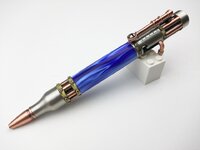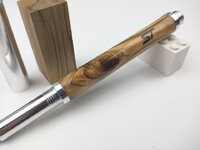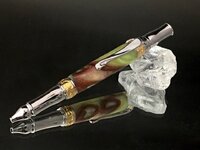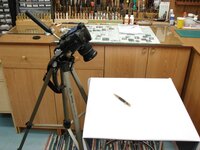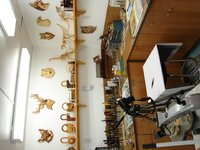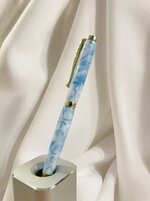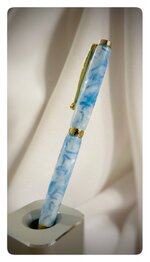Sylvanite
Member
I've seen a lot of good pen photography advice given on this forum. I have learned a lot from others, and passed along several tips myself. Unfortunately, I've also seen a lot of well-intentioned but misapplied, misunderstood, or mistaken advice as well. I'd like to take the opportunity to address some of that here.
Now, there is no single best method, nor best equipment for taking pen photos. I don't mean to imply that my approach is necessarily any better than many others. Many excellent pen photos have been posted on this site that were taken with different equipment using different techniques than I have previously described. There are, however, several asserions that keep cropping up, which I firmly believe will not necessarily yield a better pen picture.
Here is my initial list (I may add more) of Pen Photography Myths:
Each of these techniques or pieces of equipment serves a legitimate purpose in photography somewhere, but none are necessary for taking a good picture to post in in the "Show Off Your Pens" forum. I've addressed some of the items above previously, but plan to go over the others (or return to them) in subsequent posts. I'm sure I'll ruffle the feathers of some who are dedicated to their own method, but hopefully I can help others understand that they can get good pen pictures without needing to buy expensive equipment or software.
Regards,
Eric
Now, there is no single best method, nor best equipment for taking pen photos. I don't mean to imply that my approach is necessarily any better than many others. Many excellent pen photos have been posted on this site that were taken with different equipment using different techniques than I have previously described. There are, however, several asserions that keep cropping up, which I firmly believe will not necessarily yield a better pen picture.
Here is my initial list (I may add more) of Pen Photography Myths:
- You need a DSLR,
- You need a macro lens, or need to use a camera's "macro mode",
- You need to shoot in "raw mode",
- You need to use HDR,
- You need to use focus stacking,
- You need strobe lights, and
- You need to use polarizing filters, or cross-polarization.
Each of these techniques or pieces of equipment serves a legitimate purpose in photography somewhere, but none are necessary for taking a good picture to post in in the "Show Off Your Pens" forum. I've addressed some of the items above previously, but plan to go over the others (or return to them) in subsequent posts. I'm sure I'll ruffle the feathers of some who are dedicated to their own method, but hopefully I can help others understand that they can get good pen pictures without needing to buy expensive equipment or software.
Regards,
Eric

